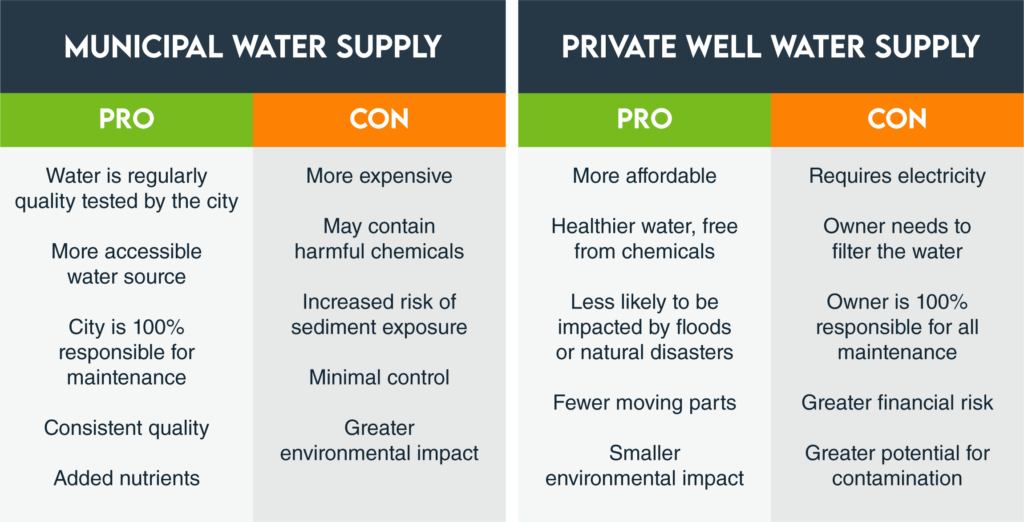Every real estate market has its own set of utility thorns—a persistent group of struggles that tend to dig deep, latch on, and find every possible way to disrupt utility services and gouge property management budgets. And in the mobile or manufactured housing market, some of the largest thorns are the plumbing and metering systems.
Let’s Examine the Roots
Though the quality of manufactured homes has come a long way since they were initially introduced in the late 1950s, they are still much more susceptible to metering and plumbing issues than site-built homes, and here are a few reasons why.
Plumbing Layout
Most manufactured housing units have plumbing lines that run underneath the home instead of between the walls like site-built homes. As such, they are more likely to experience weather-related problems like frozen or bursting pipes—which could cost anywhere from $200 to more than $1000 to repair, per instance. And that does not include the cost of any flood-related damages or the cost of wasted water that can also occur as a result.
Under-dwelling plumbing layouts can also increase the chance of low water pressure and varying kinds of build-up.
Transportation
When manufactured homes are built in one location and then shipped to another, their pipes and joints can stress, crack, and break due to weight or pressure shifts within the unit—resulting in leaks and, ultimately, wasteful utility spending.
Materials
As mentioned above, mobile homes have evolved over the years—but they are still a more budget-friendly option, meaning that their utility fixtures, connections, and piping materials are often of a cheaper, less-durable build. For example, most site-built homes will typically use copper pipes for their plumbing, whereas manufactured housing units will often use plastic pipes (e.g., PVC, CPVC, and PEX).
What’s the difference?
Looking at longevity alone, copper pipes can last up to 2 times longer than their plastic counterparts. They are also less likely to corrode due to contaminants or burst due to extreme temperature changes, and they are much more expensive to install and replace.
Differing Supply Sources
Manufactured homes have two different supply options for water and sewer services: municipal (city-owned) systems or privately-owned systems. And while a vast majority of the nation’s mobile communities are currently connected to privately-owned supply systems, some communities fall in line with site-built homes and connect to municipal utility systems.
Each supply type has its own pros and cons, as you can see below.

Sources: Angi.com and Culligan Water
Un-Smart Metering Standards
More than half of the nation’s site-built communities have installed, or have plans to install, automated read metering systems (aka ARMs or smart metering systems) to improve their utility management efforts. The manufactured housing industry, on the other hand, continues to prefer mechanical, manually read meters. As such, they are more likely to experience:
- Incorrect usage entries due to visually obstructed or hard-to-read equipment, increased data handoffs, or human error
- Prolonged leaks or usage increases
- Slower utility cost recovery
- Increased administrative stress
- Restricted access to meter-related data
Manufactured housing communities are also more likely to use master meters for resident bill-back instead of individual sub-meters—which also tends to increase the overall cost of utilities, as we will explain below.
Notice Any Trends?
If you were paying attention to the section above—which I hope you were—you probably noticed a couple of recurring issues or themes. First, manufactured housing units aren’t necessarily built-to-fail, but they are more prone to water damage and plumbing leaks. Second, manufactured home owners have options. And one of the options that we recommend is a two-pronged approach that includes both submeters and smart meters.
As mentioned above, the metering standard in the manufactured housing industry often involves manually-read master meters, or meters that only measure consumption at the property or community level. Because of this, most property owners (and their residents) are unaware of each unit’s actual utility usage—making it more difficult to identify abnormalities and encourage conservation.
Smart submetering systems, on the other hand, provide property teams with live updates for each unit. If there’s a leak or abnormality, property owners are alerted. If usage spikes, owners can drill down to find the problem unit. And, when residents receive their bills, and are held accountable for their actual usage, they are more motivated to make changes and conserve—often lowering their consumption by more than 30%.
Other benefits of smart submetered systems:
- Increased meter read accuracy
- Increased cost recovery
- More stabilized rent costs
- Decreased operating costs
- Minimized risk
- Increased property value
- Increased responsiveness to leaks and other costly dilemmas
- Increased transparency
- Increased conservation efforts (up to 30% reduction)
If Thorns Exist, Remove Them.
The great thing about thorns is that they can be removed… IF you have the right tools and the right team—and Conservice checks both of those boxes. Whether you are looking to install a state-of-the-art submetering system or simply want to make the most of the equipment you already have, our meter professionals can provide exactly what you need.
- Regulatory Support
- Support for all System Types
- Installations
- Expert Tech Support
- Accessible Data
- High Usage Alerts
Click here to learn more about our meter management solutions.
Subscribe To Our Blog Newsletter
Keep yourself ahead of the curve with the latest utility news, trends, & resources.
Editor's Picks
Multifamily Housing Trends
Real estate is always evolving due to the needs of the market and the creation and integration of new technologies. One specific trend is the growing demand for multifamily homes built to rent, especially among millennials. Multi-family trends will continue…
Read MoreENERGY STAR NextGen Certification: What’s New & How Conservice Can Help
The wait is over—well, almost! The EPA has officially announced the launch of ENERGY STAR NextGen certification, a new tier designed to recognize the nation’s most energy-efficient, low-emissions buildings. Applications open on February 24, 2025, giving properties just a few months to prepare for…
Read MoreYour BPS Blueprint: A Guide to Emerging Building Performance Standards
You hear “greenhouse gas emissions” and you think…what? “Cars,” certainly. “Industry,” probably. “Agriculture” generally, and “cows” tragically. It might surprise you, then, to find out that a major portion of our nation’s contributions to global greenhouse gas emissions come from…
Read MoreWinning the Big Utilities Game
The Big Game fervor is mounting across America. Fans make meticulous plans for their game-day feasts – wings, nachos, or perhaps a mix of both – and don colors to root for their favorite team. Living rooms turn into arenas,…
Read MoreWhy Vacant Cost Recovery is Important
Communities often bill their residents for various utility charges like water, sewer, and trash. However, there are two utilities that residents are typically required to set up in their own name with the local utility provider: electric and gas. What…
Read MoreWhat’s the Importance of Sustainability for Multifamily
It doesn’t take a keen eye to see that the focus on sustainability is growing increasingly more relevant every day. You could even say the green initiative has moved in, unpacked its bags, and is here to stay. You hear…
Read MoreWhat is ESG? Understanding the Acronym
So what is ESG (Environment, Social, Governance)? And why should property managers and owners invest in long-term ESG strategies? Cole Courson breaks down how ESG metrics provide insight into everything from environmental responsibility and community impact to corporate governance practices,…
Read MoreUtility Rate Audits: Because Assumptions Aren’t a Strategy
Making assumptions about massive amounts of cumulative dollars year-over-year is never a good idea. Yet every year, real estate owners all over the country are making the costly assumption that their utility rates are fair, accurate, and as low as they…
Read MoreThe Unbelievable Scope of Utilities | Utilities Management for the Real Estate Industry
Step into any building. Flip the switch. Turn on the tap. Crank the heater or run the AC. Watch that building come to life. Buildings are living organisms. They possess their own form of lifeblood that sustains their existence and…
Read MoreThe Insidious Hole You Might Dig for Yourself: Utilities in Build-to-Rent Properties
Some think it’s the underrated investment strategy of the future. Others in the industry insist it’s a crazed phase doomed to settle into a niche offering. But wherever you land on the will-they-won’t-they of build-to-rent (BTR) investments, they’re growing. From mainstage topics…
Read MoreStart your most positive connection
Contact us today! Get a demo to see how you can remove the burden of utility management while reducing your costs and energy usage.













